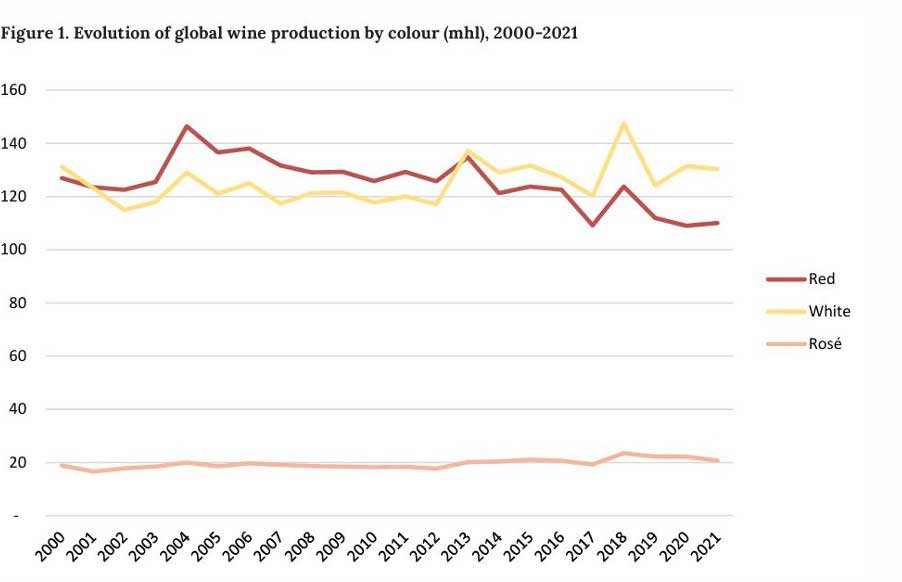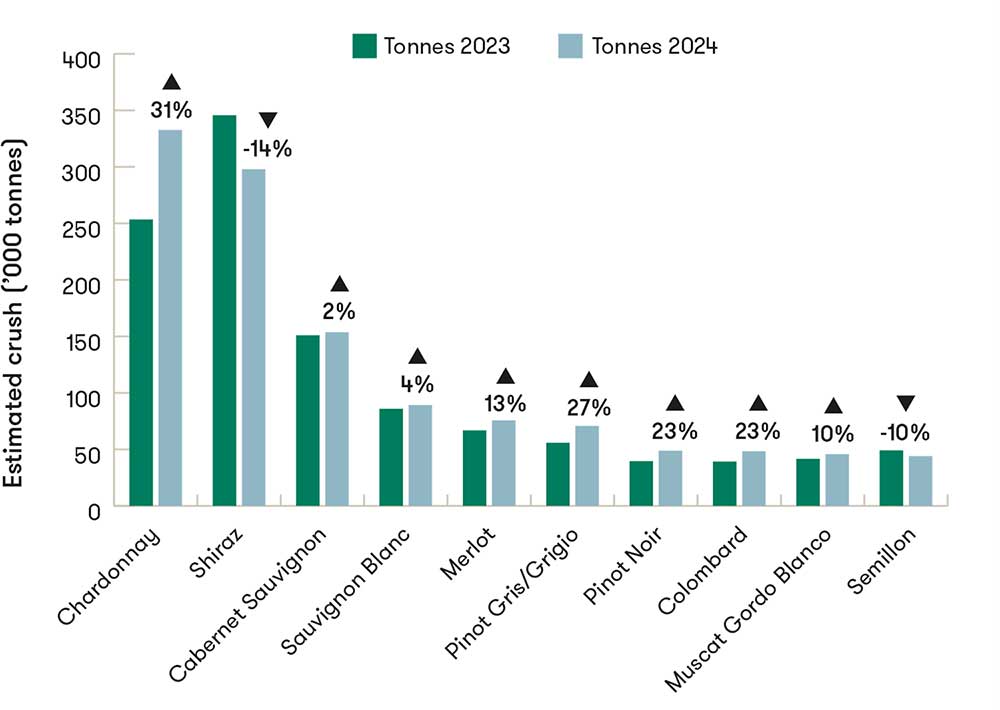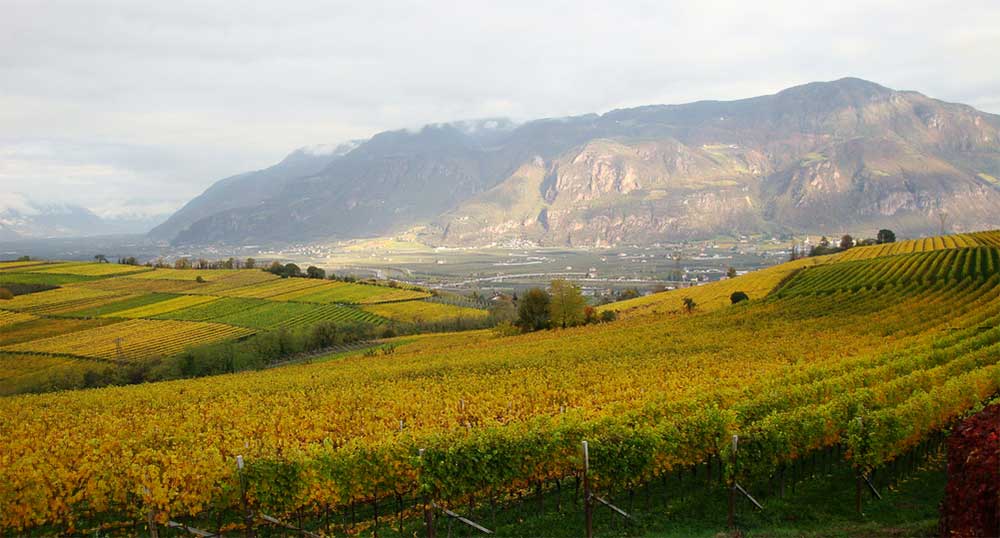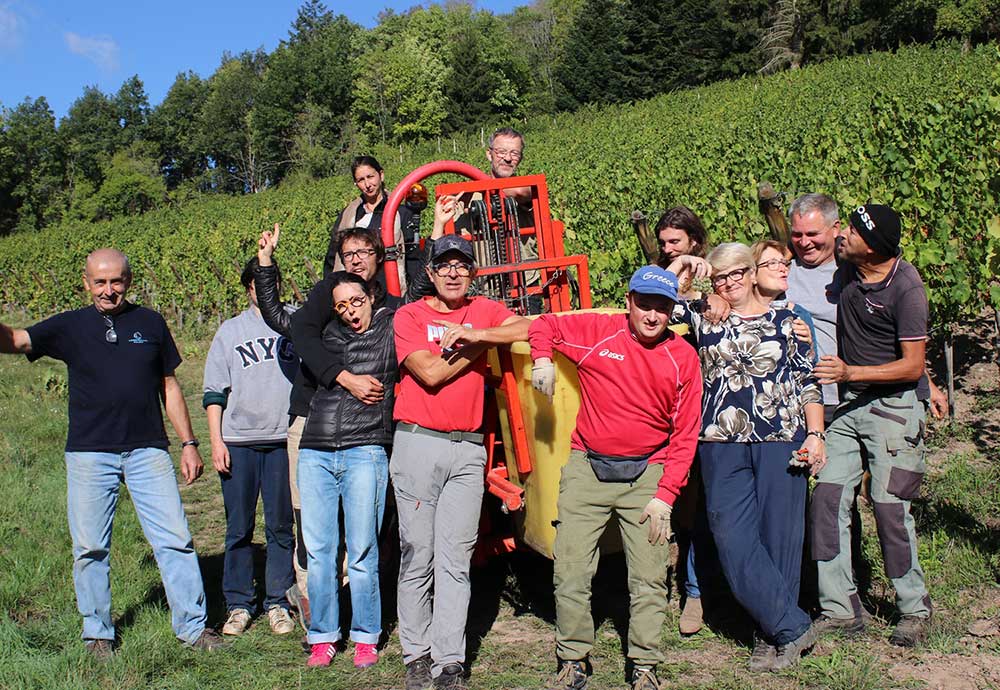You say Pinot Gris, I say Pinot Grigio...
.jpg) Pinot grigio and pinot gris are of course the same variety, the difference between them simply being the style in which the resulting wine is made. In Italy, the variety is known as pinot grigio and the best examples are found in the northeast in the regions of Friuli and Trentino Alto-Adige. Here it’s picked early to produce a lighter-bodied, crisp, fresh white. In France where the variety originated, it’s known as pinot gris, with the vast majority of plantings found in Alsace. Here you’ll find pinot gris used as both a single varietal and in blends to produce mainly dry whites. These whites are slightly rounder, more textured and spicy. They also have the ability to age. In Australia, producers label their wines pinot gris or pinot grigio, depending on which of the two styles they’ve made.
Pinot grigio and pinot gris are of course the same variety, the difference between them simply being the style in which the resulting wine is made. In Italy, the variety is known as pinot grigio and the best examples are found in the northeast in the regions of Friuli and Trentino Alto-Adige. Here it’s picked early to produce a lighter-bodied, crisp, fresh white. In France where the variety originated, it’s known as pinot gris, with the vast majority of plantings found in Alsace. Here you’ll find pinot gris used as both a single varietal and in blends to produce mainly dry whites. These whites are slightly rounder, more textured and spicy. They also have the ability to age. In Australia, producers label their wines pinot gris or pinot grigio, depending on which of the two styles they’ve made.
I read an interesting piece last week about the global shift away from red towards white wine. Check out these graphs from the OIV. (Organisation Internationale de la Vigne et du Vin).


Following suit, the 2024 vintage in Australia saw white varieties account for 51% of the crush, overtaking red for the first time in a decade. It also saw chardonnay (330,000t) overtake shiraz (298,000t) to become the most crushed variety.
After chardonnay, and in line with the shift to white, it was pinot gris/grigio that had the largest increase in percentage terms, up a whopping 27 per cent.
 Pinot gris in Australia goes right back to James Busby, an amazing fellow who’s generally regarded as the father of Australian viticulture. Busby wrote several significant viticultural books, including the snappily titled “A Manual of Plain Direction for Planting and Cultivating Vineyards and for Making Wine in New South Wales” (1830). But his most significant contribution was a trip back to the major wine regions of France and Spain in 1831, during which he collected 543 vine varieties. 362 of these made it back to NSW, one of which was pineau gris which Busby obtained from the Cote-d’Or in Burgundy.
Pinot gris in Australia goes right back to James Busby, an amazing fellow who’s generally regarded as the father of Australian viticulture. Busby wrote several significant viticultural books, including the snappily titled “A Manual of Plain Direction for Planting and Cultivating Vineyards and for Making Wine in New South Wales” (1830). But his most significant contribution was a trip back to the major wine regions of France and Spain in 1831, during which he collected 543 vine varieties. 362 of these made it back to NSW, one of which was pineau gris which Busby obtained from the Cote-d’Or in Burgundy.
Pinot gris remained virtually unknown in Australia until the early 1990s when it was brought to prominence by Kathleen Quealy of T’Gallant in the Mornington Peninsula. It was a tough sell back then - nobody knew the variety. In Australia in 2003 there were less than 500ha planted, these days there are over 3,700ha.
“In Australia, it’s one of the fastest growing retail categories, and whilst it is nowhere near the heady heights of sauvignon blanc, it is growing rapidly… Wine drinkers simply can’t get enough.” Wine Australia.
Not only has pinot gris increased in popularity, it’s also undergone significant change in style and quality in Australia.
“Things have come a long way. There are now many delicious Pinot Gris and quite a few excellent Grigios in Australia. The best Gris have a touch of barrel fermentation (a la Chardonnay) and lees work adding character; they're also more likely made from ripe grapes and low yields, which gives more concentration.” Huon Hooke.
“Pinot Gris - is the widely disseminated, fashionable vine variety that can produce soft, gently perfumed wines with more substance and colour than most whites,” Oxford Companion.
Here are a few pinot gris/grigios that I like. One from the home of the variety, Alsace, one from Italy and one from a local region.
 1. Deviation Road Pinot Gris 2023
1. Deviation Road Pinot Gris 2023
I had the pleasure of a visit from Hamish Laurie when he visited Sydney several weeks ago. Hamish and his wife Kate are the dynamic winemaking duo who established Deviation Road in 1999.
Hamish is a 5th generation Adelaide Hills vigneron, whose great-great-grandmother was the first female winemaker in South Australia. He and his father established Hillstowe Wines back in the 80s, and subsequently sold it to the big end of wine town. Kate is from a winemaking family in WA and is the one with the real winemaking chops, completing her viticulture and oenology diploma at no less than Lycee Viticole d'Avize in Champagne. Kate was an Australian Gourmet Traveller Winemaker of the Year Finalist in 2016 and has been a Judge on the wine show circuit for many years. Aside from being a highly talented winemaker, she’s a super nice person to boot. Given Kate’s training and experience, it’s no surprise that Deviation Road’s sparkling wines capture most of the attention, but their still wines are known for their finesse and complexity.
5 Star Rating - James Halliday Wine Companion.
Adelaide Hills is an easy 30-minute drive east of Adelaide and part of the Mount Lofty Ranges. Vines were planted here as far back as the 1840s, and from then until 1900 there were 225 grape growers in the area, including big names like Penfolds and Hardys. The region had fallen into a bit of a hole by the 1930s and it wasn’t until the 1970s that Brian Croser identified the area as suitable for cool-climate varieties. By the mid-90s it was recognised as a premier site, most notably for chardonnay and pinot noir, but also for sauvignon blanc, shiraz and pinot gris.
These days the region is one of the largest geographical wine regions in Australia as well as the most diverse in terms of climate, soil and topography. It has two recognised sub-regions, Lenswood and Piccadilly Valley as well as several villages, including Stirling and Crafters. While Hahndorf technically sits just outside the Hills, it’s the one most tourists visit for a day of German food and culture. And it was also home to artist Hans Heysen.
Like all the Deviation Road wines, the pinot gris is a small production, handmade affair. The fruit was handpicked from two different sites in the Hills and fermented using a combination of natural and cultured yeasts. Around 30% was aged in old French oak to lend an extra dimension to flavour and complexity. The finished wine is 12.4% and is sealed with screwcap.
Owners Hamish and Kate Laurie continue a five generation winemaking tradition at Deviation Road.
“2023 was a very long and cool season producing elegant, well-structured wines. The fruit was picked in small parcels at differing levels of ripeness, resulting in a wine with fine structure. Partial barrel fermentation in seasoned French oak, combined with regular bâttonage, creates an enticingly textural Pinot Gris with lifted pear, citrus and rose petal aromas.” Winemaker's notes.
“This is a well-balanced and elegant expression of gris. It delivers hallmark nashi pear, sweet spice, preserved citrus and leafy herbal elements, just so, even, balanced and bright. The palate is supple, a touch succulent, imbued with cooling, briny acidity and yet joyful in its vibrant fruit and spice character, finishing long and to a fine, talc-like minerally point. Easy to like.” 93 points, Halliday Wine Companion.
You’ll find it at several joints around town including The Caterpillar Club, Hubert and Shell House (Menzies 7D).
Enjoy great value drinking at home for $25 a bottle
Bollini has wineries in Friuli and Trentino both of which are in Italy’s northeast. Winemaker Franco Bernabei has served as consultant to many of the most prestigious estates in Italy, including Folonari, Fontodi, Sartori, Guicciardini Strozzi and a favourite of mine, Felsina. With a family history of winemaking, and degrees in viticulture and enology, Franco’s interest lies in traditional Italian wines and local grape varieties including pinot grigio. Over the years he’s collected a swag of awards, including an ‘Oscar del Vino’ in 2000, presented by the Associazione Italiana Sommelier. On two occasions his wines have also placed in Wine Spectator’s ‘Top 100 Wines of the World’. Suffice to say he knows his stuff.
This wine comes from Trentino DOC (a separate appellation to Alto Adige), a cool, mountainous area up on the border with Austria, perfect for crisp, aromatic pinot grigio. The fruit was handpicked and fermented in temperature controlled stainless steel tanks to ensure the wine retained its freshness. The wine sees a short time on lees (dead yeast cells) which involves a little bâtonnage (stirring), adding a little extra complexity and depth.
“Straw yellow in colour, clean and delicate nose, with aromas of acacia flowers and pear as well as light mineral notes. The fresh, natural acidity supports the wine’s aromatic richness, confirmed on its elegantly structured, smooth, round and persistent palate. A crisp, defined, fruity style.” Winemaker’s notes.
 Bollini vineyards in the Alpine foothills of Friuli and Trentino.
Bollini vineyards in the Alpine foothills of Friuli and Trentino.
In the glass, this is a light yellow gold. On the nose, fresh honeydew, pear and gooseberry notes mingle with slightly richer hints of baked pineapple and nuttiness. On the palate you’ll find citrus, honey and floral notes with a hint of fresh hay. Good crisp acid with a touch of richness in the mid-palate. Finishes nicely dry - a great match for grilled seafood.
Fresh, crisp and affordable.
I can offer it for $26.50 a bottle
.gif) Domaine Jean-Luc Mader Pinot Gris 2022
Domaine Jean-Luc Mader Pinot Gris 2022
This is the estate’s entry level pinot gris and is a favourite year-in, year-out.
Domaine Jean-Luc Mader is a small, family run affair, based in the village of Hunawihr. Sitting on the famous ‘Route des Vins’ in Alsace, the village was founded in the 7th century by one of the country’s first nobles, Lord Hunon and named after his wife Hune. Despite her nobility and wealth, Hune put herself at the service of the village’s poor - lodging them, feeding them and even washing their clothes in the town’s fountain. She was canonised in 1520 and is now known as the saint of washerwomen.
While the Mader estate is based in Hunawihr, it owns a total of 9 hectares of vineyards, spread over four districts: Hunawihr, Ribeauville, Riquewihr and Kientzheim. Of particular note are prized holdings of vines in the famous Rosacker Grand Cru vineyard, as well as the Schlossberg Grand Cru vineyard. The estate produces several wines including a pinot noir, riesling, muscat, gewurtztraminer and of course pinot gris.
Jean-Luc and his wife Anne took over the estate in 1981, but since 2005 their son Jérôme, having gained a diploma in oenology, has been at the helm. Jerome has converted all their vineyards to bio-dynamic viticulture - so no chemicals, and all vineyard work is carried out by hand.
Rated top 10 Best Value Producers in Alsace - Tom Stevenson’s Global Report.
“Although Mader’s wines from Grand Cru Rosacker steal the show, his entire line-up is recommended.” Jacqueline Friedrich, The Wines of France.
This entry level wine is everything to like about Alsacian pinot gris. On the nose you’ll find juicy ripe pineapple, lemon and honey aromas. On the palate, more complex notes of lemon, musk, honeysuckle and aromatic honey meld with clean and well-balanced acidity. Much softer than a riesling, but much more generous and plump in the mouth.
 The end of vintage at Domaine Mader.
The end of vintage at Domaine Mader.
“Good aromatic lift with smoky peach, apple and exotic tropical fruit characters on the nose and palate. The driest Gris we have tasted here yet still round and supple in texture, with wonderfully precise flavour. Great concentration and depth with a tiny residual sweetness in this ripe vintage. The rich texture and cleansing acid balance gives this wine great immediate appeal, yet it also has the structure and depth to age mid-term.” Vintage and Vine.
Delicious drinking.
I can offer it for $39.50 a bottle